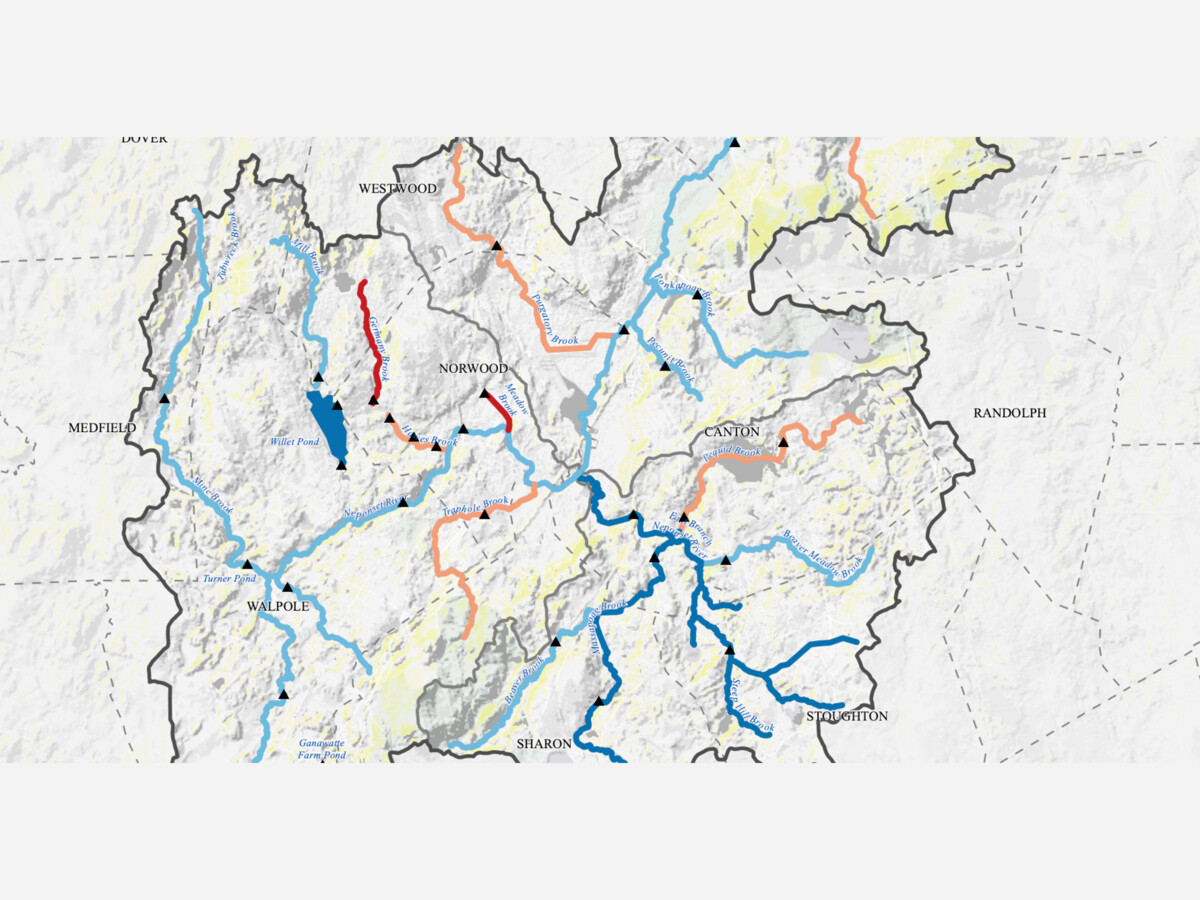Image


The water quality of Westwood’s Purgatory Brook has improved and is now usually safe for boating, but water quality fell or held the same for two other Westwood brooks, in part of the larger story of stalled progress in achieving swimmable urban rivers, according to information contained in a press release issued by area watershed associations on August 3, 2023 regarding the U.S. Environmental Protection Agency’s (EPA’s) 2022 Water Quality Report Card for the Neponset River watershed.
The extremes of drought and increased precipitation from climate change “threaten to stall the progress made toward swimmable urban rivers,” say Neponset River Watershed Association (NepRWA), Charles River Watershed Association and Mystic River Watershed Association.
The water quality of the Neponset watershed, of which Westwood is a part, is “quite good in the mainstem” and numerous lakes and ponds are swimmable and boatable, but some of the tributaries to the watershed are more problematic.
For example, Willett Pond, located partially in Westwood and partially in Walpole, received an A+. It is ranked 3rd out of 36 water bodies that appear on the current report card. It’s rating indicates very high marks for “swimmability.” (Buckmaster Pond, where many locals in Westwood swim, was not rated on the report card, as it does not feed into Neponset River.)
The EPA report card issues grades, in an attempt to communicate water quality for river users by focusing on concentrations of E. coli, an indication of fecal contamination. The meaning of the grading scale is as follows:
A = Swimmable, almost of the time
B = Swimmable much of the time and boatable almost always
C= Boatable usually, but not generally swimmable
D = Boatable sometimes, but not swimmable
F = Usually neither boatable nor swimmable
In contrast to Willett Pond, Westwood’s brooks still have much room for improvement, according to the latest report card.
“Polluted stormwater runoff from streets continues to be a huge problem, and we are working to educate residents and upgrade stormwater infrastructure systems to reduce pollution and prepare for climate change,” said Ian Cooke, Executive Director of NepRWA. He says that slowing stormwater flow, replenishing groundwater, and returning clean, filtered water to rivers is needed.
Increased precipitation results in additional stormwater pollution, combined sewer overflows, and flooding. When untreated water is carried directly into water bodies, it degrades the river ecosystem and exposes river users to bacteria, viruses, excess nutrients, pharmaceuticals, trash, and PFAS compounds. For example, in the Charles River Watershed, over 126 million gallons of sewage and stormwater went into the Charles River in 2021 due to a record 35 inches of precipitation that year. NepRWA recommends avoiding recreation in water bodies directly following rainy days.
Additionally, NepRWA's website lists as ways to reduce polluted rain runoff:
At the opposite end of extreme weather events is drought. It leads to increased concentrations of bacterial pollution in water bodies. In the Charles River Watershed, water levels fell to under half a foot in Bellingham, Medfield, Needham, Newton and Waltham.
Although the EPA issued report cards for the Charles River and Mystic River watersheds beginning in 1995 and 2006 respectively, EPA only began reporting grades for the Neponset River watershed in 2021.
In the process of obtaining the EPA report card, hundreds of community science volunteers collect water samples from which concentrations of E. coli bacteria are detected. The samples are sent to the Massachusetts Water Resources Authority (MWRA) which analyzes the samples. MWRA reports the results to EPA, which announces the letter grades.